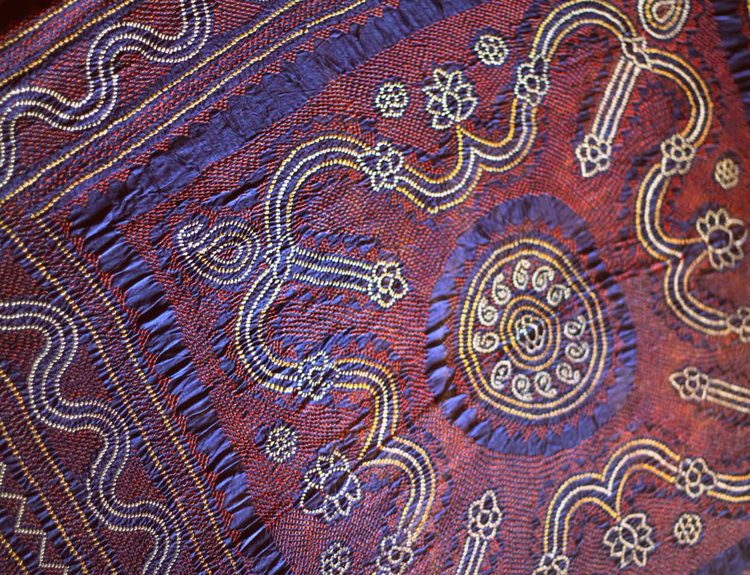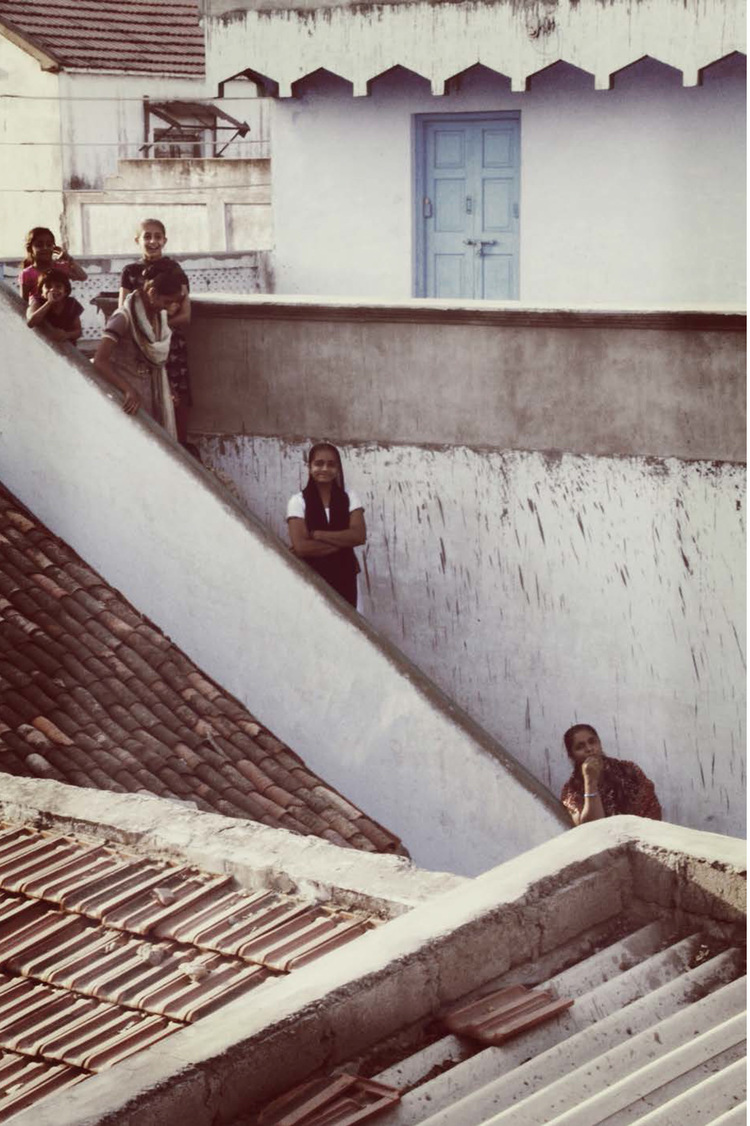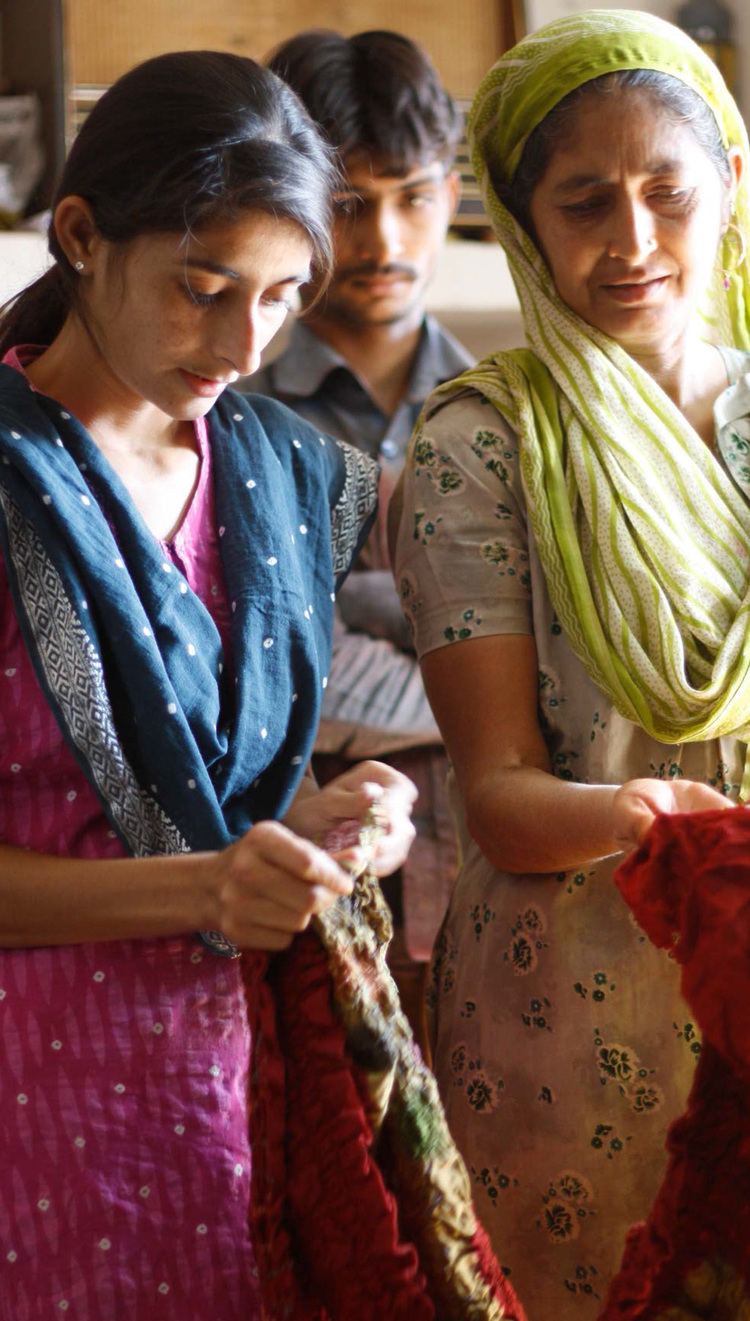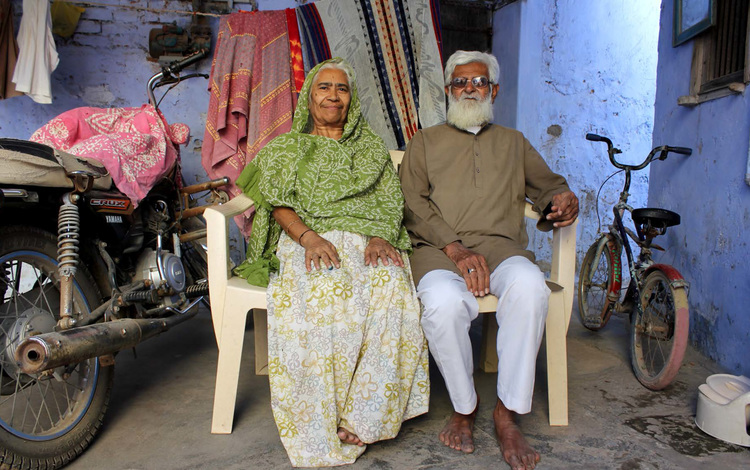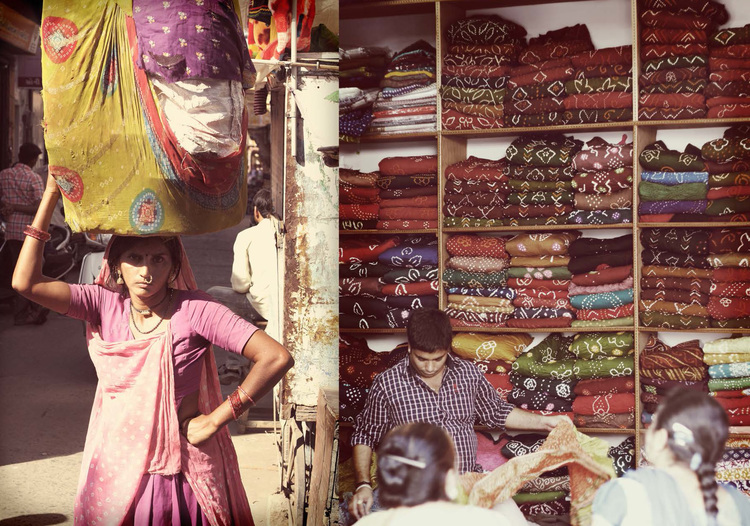Bhuj
Bhuj is the main cultural hub of Kachchh, and the home of many artisans and businessmen working in different creative industries. The largest community of bandhani artisans is located in Bhuj , and the work done here ranges from weaving the fabric, printing the design, getting it tied, dyed, and sold in markets locally or internationally. Many artisans choose to run their business from Bhuj while the work is done in Mandvi, Mundra, Anjar or Abdasa. The local markets have bandhani of all price ranges, materials, and designs. Ranging from traditional odhanis to fashion-forward dresses and stoles, Bhuj’s artisans are skilled in providing unique collections for tourists, locals and other segments of the market.
Spotlight on the artisans: Iqbal Alimohamed Isha
Iqbal Alimohamed Isha’s father and mother have both been working with bandhani all their life, and come from many generations of bandhani artisans. Their family has been making bandhani for wealthy communities, cotton odhanis for Harijan communities and also colorful turbans for men. Iqbal has been working with bandhani for more than 18 years and joined the business to continue the family tradition.
His mother (Sakinabai) and grandmother (Hajrabai) were at an exhibition in Delhi in 1975 and were recognized by Prime Minister Indira Gandhi and the National Award Selection Committee for their skillful work. As a result, in 1976, they received a joint National Award without any official submission. After that, they traveled to Vienna, Austria (1 980) and Barwickle Gallery in London (1982) for bandhani demonstrations.
Iqbal Alimohamed Isha is most interested in experimenting with new designs and techniques to bring unique products into the market
PRODUCT FOCUS: ABHA
Many Muslim women belonging to different communities in Kachchh wear abhas, which is a dress typically worn with a matching salwar called ejar. Traditionally, these were the only tailored bandhani garments made in silk and worn by Khatri Muslims. They were red and black in color, and worn along with a chandrokhani or other odhani of the same color combination.
A variety of designs were used, such as kamaliya, shikari and four dot design, and they were tied to ensure an identical design in the front and back. A bride’s abha was always red, but in daily wear, all color combinations were used. Even today, abhas are still being made and worn, with both modern and traditional designs
Spotlight on the artisans: Abdul Jabbar Khatri
Abdul Jabbar Khatri is a Bhuj -based artisan that has revived a family business that had been given up for multiple generations. Along with his brother, Jabbar started his bandhani business despite getting his degree and completing his education elsewhere. He had an interest in textile, and has built his business to satisfy a niche market of consumers and clients. Over the years, he has had exposure to many tourists, buyers and fashion designers, and has traveled to many parts of the world for workshops, exhibitions and demonstrations.
Spotlight on the artisans: Aminaben Khatri
Aminaben Khatri, one of the only bandhani businesswomen, has been running a wholesale business from her home. She got interested in the work after watching her aunt tying, and learned everything she could from her. Now, she spends time training poor women how to tie and make a living from bandhani while managing her business. She enjoys keeping the tradition alive, and still makes abhas in traditional designs. In 1 985, Aminaben Khatri won a National Award for bandhani, and traveled to a museum in Washington DC, USA for a 3 month event where she demonstrated bandhani. Upon her return, Prime Minister Rajiv Gandhi invited her to his house and honored her skill and contributions.
Spotlight on the artisans: Arif and Sohail Khatri
Arif and Sohail Khatri are brothers who have been working with all aspects of bandhani. Their great grandfather was a block printer in Abdasa, and their father, Haroon Khatri left Abdasa to work in Mumbai as a shop salesman. He shifted his family to Bhuj upon his return and started working with bandhani abhas, saris and dupattas. He has also displayed his work at an art gallery in Mumbai.
Arif and Sohail are building on their father’s successful venture, and enjoy their work. Arif continues to experiment with new dyeing techniques, designs and materials for his many clients. Sohail just completed a design course, and is using his skills to design new products that will be successful in the international market.
“Here, we work in a limit, we have a standard. It is not about making as much money as possible, but doing the best quality work. ”
- Sohel Khatri
PRODUCT FOCUS: CHANDRALOKHANI
Chandrokhani is a term used for a black and red odhani with very fine designs, and is given to Muslim brides by their mother-in-law at the time of her wedding. The odhani is further embelllished with gold borders and zari bought in other parts of India for added richness. Chandrokhani roughly translates to “like the moon” and is worn by the bride as she is welcomed into her new home. Traditionally, this odhani is worn until the seventh day, when a ceremony called Satara takes place. Chandrokhani is unique as there are no figures used in the design, and there is a medallion like the moon placed in the center of the odhani. It is also worn in everyday attire, and often paired with an abha or salwar kameez. Women in a Memon community wedding also wear chandrokhani odhanis if the bride is wearing a shikari pattern odhani. Black background with central moonshaped medallion; motif is believed to create a visual analogy between the moon and the bride's beauty.
Spotlight on the artisans: Mohamed Alimohame
Mohamed Alimohamed, better known as Adabha, originates from Bara village in Abdasa, and learnt bandhani from his father as well as time spent working in Jamnagar. He built good connections in Jamnagar and returned to Bara to start his first workshop. His business did very well and he began traveling to exhibitions and demonstrations. Due to an increasingly hectic schedule and to grow his business, Adabha relocated to Bhuj after the earthquake in 2001.
Adabha has been fortunate to travel all over the world for his craft and enjoys meeting people who are interested in his work. He has received multiple accolades for his work, such as the prestigious Shilp Guru Award, and a National Award.
He has exhibited in USA, Europe, South America, and the Middle East. His wife is very good at tying, and teaches other women in her spare time. Juned, Adabha’s son, has also joined the family craft and aspires to follow in his father’s footsteps.
Explore more regions:






